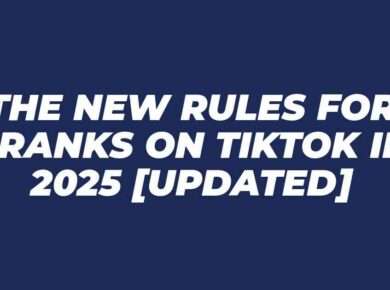Influencer marketing has transformed how businesses connect with audiences, offering authentic and engaging ways to promote brands. But when it comes to choosing the right type of influencer, should you go big with a celebrity or opt for the relatability of a nano-influencer? Understanding their differences matters more than ever in 2025, as marketing strategies demand precision and trustworthiness.
Celebrity influencers bring massive exposure, while nano-influencers foster deeper personal connections. Both have their advantages and limitations, and finding the right fit could define the success of your next campaign. If you’re curious about how nano-influencers are reshaping the marketing world, this article provides valuable insights.
Who Are Celebrity Influencers?
Celebrity influencers are individuals with fame that extends beyond social media. They may be actors, musicians, athletes, or personalities who use their massive platforms to shape opinions and promote brands. Their audience is often global, cutting across age groups, demographics, and interests. What sets celebrity influencers apart is their ability to amplify brand messaging in ways that few others can match.
For instance, global stars like Logan Paul and Blackpink have transformed their fame into social media dominance. Logan Paul evolved from a Vine comedian to a multi-faceted entertainer, while Blackpink has captured audiences worldwide with record-breaking music videos. These influencers command vast audiences who trust their opinions and align with their lifestyle choices.
Advantages of Celebrity Influencers
Celebrity influencers bring natural advantages to the table due to their massive recognition and influence:
- Global Reach: Their popularity allows brands to scale campaigns internationally. Blackpink, for instance, has fans from Seoul to New York, making them a powerhouse for global products such as luxury fashion and cosmetics.
- Brand Prestige: Endorsements from high-profile influencers immediately signal quality. For example, Logan Paul’s partnerships with premium energy drink brands elevate their perception.
- Immediate Impact: With millions of followers, their posts translate into instant visibility, driving awareness faster than traditional marketing methods.
Brands are drawn to these influencers because they increase exposure and instantly connect a product with luxury, entertainment, or aspiration.
Challenges of Working with Celebrity Influencers
However, working with celebrity influencers isn’t all glitz and glamour. There are challenges businesses must weigh carefully:
- High Costs: Endorsements from high-tier influencers come with hefty price tags. A single post or campaign can cost hundreds of thousands, pricing out smaller brands.
- Less Relatability: Celebrities often feel “out of reach” to their audiences. While followers admire them, they may not feel personally connected, which can affect conversion rates.
- Reputation Risks: If a celebrity’s beliefs or actions clash with a brand’s values, it could spark backlash. For example, any misstep by a high-profile celebrity like Logan Paul could make headlines, dragging a brand into controversy.
Balancing these pros and cons helps businesses determine whether a celebrity influencer is the right fit for their goals. While they offer unmatched exposure, the costs and risks associated require strategic planning to avoid pitfalls.
Defining Nano Influencers
Nano influencers may lack the blockbuster fame of celebrities, but they have something even more valuable: trust. These are social media creators with small, loyal followings typically ranging from 1,000 to 10,000 followers. Their authenticity stems from their close connection to their audience, making them highly relatable and approachable. In today’s marketing world, where brands crave trust and meaningful engagement, nano influencers are proving that smaller can indeed be mightier.
Benefits of Nano Influencers
Nano influencers bring a unique set of advantages that differentiate them from bigger names in the industry. Here’s why brands are increasingly choosing them:
- Increased Credibility: Their audience views them as everyday people, not unreachable icons. This relatability builds genuine trust, which translates directly into purchasing decisions. Their recommendations often feel like advice from a friend, not a sales pitch.
- Stronger Engagement Metrics: Nano influencers may have fewer followers, but their engagement rates often outperform those of larger influencers. A smaller audience means comments and messages are frequently replied to, creating a two-way conversation that larger influencers can’t easily replicate.
- Affordability: Smaller reach doesn’t mean less impact, and it comes with a much smaller price tag. This makes nano influencers ideal for startups, small businesses, or brands looking to stretch their budget without sacrificing effectiveness.
- Niche Markets: Nano influencers often specialize in a particular subject or passion, such as sustainable fashion, indie gaming, or DIY crafts. This allows brands to target a specific audience more precisely. If you’re curious about how niche markets drive value, this article dives into how influencers build meaningful connections.
- Tailored Content: Since they work with fewer brands, their content feels genuine and less corporate. This fosters a perception of authenticity, making their sponsored posts resonate more with their audience.
Limitations of Nano Influencers
While their strengths shine in many scenarios, nano influencers also come with challenges businesses should consider:
- Restricted Audience Size: Their smaller reach can be a double-edged sword. If you’re looking to quickly generate widespread awareness, nano influencers might not deliver the scale you need.
- Potentially Limited Professionalism: Nano influencers are often hobbyists, not seasoned marketers. This could mean missed deadlines, less-polished content, or challenges in aligning with a brand’s vision.
- Inability to Scale Massive Campaigns Quickly: Deploying a campaign with multiple nano influencers can become complicated. Managing several creators and coordinating content requires time and effort, which may not be ideal for campaigns with tight deadlines.
Brands need to weigh these factors carefully when choosing to work with nano influencers. For those interested in a deeper examination of their growing importance, this resource sheds light on their rise in the influencer marketing space.
When to Choose Celebrity Influencers
Celebrity influencers are often the go-to for brands aiming to create monumental impact. Their ability to elevate a campaign comes from their pre-established fame and their knack for grabbing attention across global audiences. But when is the right time to deploy these big names into your marketing strategy? It boils down to the nature of the industry and your campaign objectives.
Key Industries Leveraging Celebrity Influencers
Some industries benefit more than others from celebrity endorsements, primarily because of the aspirational image these larger-than-life figures bring.
- Fashion: High-end fashion brands often rely on celebrity influencers to maintain their elite status. When a star shows up in a designer outfit at an awards show or posts about it on social media, their millions of followers suddenly see that brand as the pinnacle of style. Take luxury brands like Louis Vuitton or Gucci as an example. Their partnerships with global stars ensure the brand remains synonymous with opulence and exclusivity.
- Luxury Goods: From high-tech watches to luxury cars, celebrity influencers add a sense of sophistication that appeals to affluent consumers. Products in this category aren’t just purchases; they’re lifestyle statements. A Maserati or a Rolex gains more than exposure; it gains credibility when associated with a well-known figure.
- International Campaigns: Celebrity influencers are a smart choice for campaigns that have an international focus. Because their fame transcends geographical boundaries, they can help brands reach massive, diverse audiences. Global stars like Like Nastya embody this, effortlessly connecting with audiences in multiple regions, making them ideal for multinational campaigns.
Celebrity influencers excel at offering prestige, visibility, and aspirational value, making them perfect for industries and campaigns where these qualities are key objectives.
When Nano Influencers Are the Better Fit
Nano influencers excel in areas where authenticity, trust, and engagement trump sheer numbers. They are often the best choice for brands aiming to build genuine relationships with their audience, especially for grassroots campaigns, niche markets, or local events. Because of their smaller, highly engaged follower base, nano influencers can amplify word-of-mouth marketing in ways that feel natural and credible.
Effective Platform Strategies for Nano Influencers
Nano influencers shine brightest on platforms that prioritize personal connections and visual storytelling. Instagram and TikTok are particularly ideal for these creators, thanks to their emphasis on visual content and community engagement.
- Instagram: This platform fosters a highly visual and interactive environment where nano influencers can showcase products authentically. Through posts, Stories, and Reels, they create content that mirrors genuine lifestyle recommendations. For instance, many nano influencers succeed by focusing on specific passions—whether it’s sustainable fashion or home organization—which resonate deeply with niche audiences.
- TikTok: TikTok’s algorithm gives smaller creators a chance to go viral, making it a goldmine for nano influencers. The platform rewards authenticity and creativity, key strengths of nano influencers who master short-form video content. From quirky DIY tutorials to authentic product reviews, TikTok’s casual tone aligns perfectly with nano influencers’ approachable style.
Emerging platforms such as BeReal—or even niche community-based ones like Discord channels—also offer opportunities for nano influencers to cultivate deeper audience connections. These platforms reflect a growing social media trend: people crave realness over perfection, a shift nano influencers are uniquely equipped to handle.
For insights into platforms that drive nano influencer campaigns, check out this page. It dives into how creators optimize their strategies based on each platform’s unique strengths.
Nano influencers thrive when their relatable content meets platforms that value authenticity, making them an ideal fit for brands targeting trust and loyalty over sheer volume.
Conclusion
Choosing between celebrity and nano influencers depends on aligning their strengths with your marketing goals. Celebrity influencers captivate broad audiences with star power, while nano influencers excel in fostering trust and deep engagement within niche communities.
Each path has its trade-offs. To succeed, brands must weigh factors like reach, budget, and audience connection. For more insights into selecting the right influencer for your campaign, visit this guide on influencer marketing strategies.
Thoughtful strategy and understanding your audience’s needs are essential. Whether aiming for global exposure or localized engagement, influencer marketing works best when intentional. Which type feels right for your next campaign?









